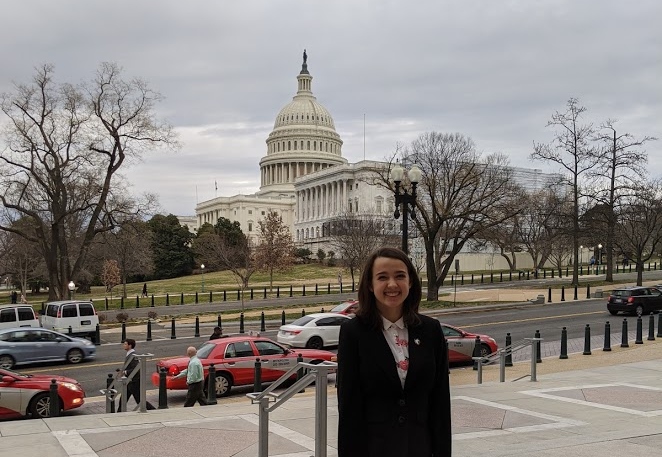By Wendy Rex-Atzet, Utah Division of State History
In my work with the National History Day (NHD) program, I have witnessed the transformative power of relevancy in student learning. So often our students report that they didn’t think history was relevant in their lives… until they had the opportunity to delve into something that was meaningful to them. “By doing these projects,” a high school student reflected, “not only do you feel that you have a place in a vast universe, you feel more empathetic. Human.”

I have learned that finding the local in the global can help students identify with content across curricula in the arts, humanities, and science. Indeed, taking a local approach to material that seems removed or irrelevant to students often leads to new forms of student insight and engagement.
For example, students investigating World War II can connect a distant war with their own communities by exploring how the lives of local people were touched by that global conflict. Students might discover the rural women who worked at the Manti Parachute Factory, who often tucked notes of encouragement for soldiers into parachutes bound for the front lines. They might consider how incarcerated Japanese Americans at Topaz relied on art and culture to cope with the loss of their freedom. They might learn about how the Navajo men who served as code talkers in the Pacific theater helped to revitalize Navajo language and culture. Each of these local case studies can help students bring the war “home” in profound and personal ways.
Teaching with Utah History, a new landing page on UEN, offers educators easy access to classroom resources that are centered in Utah and its diverse peoples. Organized and curated by the Utah Division of State History, the site features lesson plans and activities created by our community partners in history, the arts, and humanities. The materials are designed to be useful well beyond social studies coursework, and lend themselves to integrated learning.
Here are some of the resources you can access through Teaching with Utah History:
Art Integrations
The Springville Museum of Art offers lesson plans, virtual tours, posters and postcards that make it easy to integrate Utah art with other instruction.
Science Integrations
Lesson plans on the historic John Jarvie Ranch in eastern Utah show how archaeology, ecology, geology,and history intersect at this state landmark.
Learn about natural resource conservation in Utah through the work of the Civilian Conservation Corps during the Great Depression.
Social Studies Integrations
In line with new social studies core standards, primary source sets help students develop critical thinking skills through hands-on analysis of real historical sources. Each set offers a curated selection of student-friendly documents, photographs, maps, oral histories, and more.
Discover Native American cultures, art, and lifeways through BYU Arts Partnership’s Native American Curriculum Initiative and PBS Utah’s We Shall Remain series.
Link to a wide range of resources on the first transcontinental railroad, including its connections with the Chinese community, Native Americans, Latter-Day Saints, economics, and more.
Examine global industrialization through a Utah lens, such as international immigration to Utah’s mining communities.
Explore how World Wars I and II transformed the life and work of Utah women, and the experience of Utahns on the front lines.
Discover the leadership of Utah women in their long campaign for political rights, as well as their work in the arts, education, business, and their communities.
Investigate Utah’s tourism industry through digital exhibits on our state’s national parks and the Salt Lake City Olympics.
Work with secondary students on difficult topics such as the Mountain Meadows Massacre, Bear River Massacre, and Japanese Internment.
Conduct your own research using Utah History to Go, an online encyclopedia with hundreds of articles on Utah history.
As our partners continue to develop classroom materials, we will continue to develop this landing page to serve as a living resource for teaching with Utah in the widest possible range of classroom settings.
(This article was also posted at BYU ARTS Partnership on January 26, 2021.)

